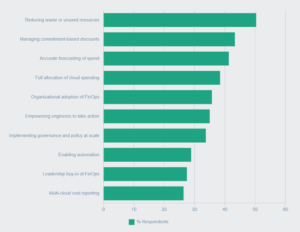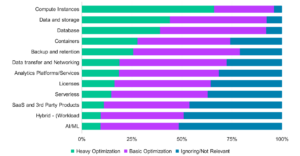
Reducing Cloud Waste a Top Priority in 2024, FinOps Foundation Says

(ESB-Professional/Shutterstock)
The increasing cost of cloud computing, particularly when it comes to storing data to feed AI algorithms, is a growing concern among companies, particularly larger ones, according to a new report by the FinOps Foundation.
The FinOps Foundations’ fourth annual State of FinOps Survey, released last week, detected some significant changes in cloud spending patterns compared to previous years. The survey found that spending on compute capacity is no longer the big issue that it once was, and that compute is now the most optimized among the different categories of cloud spending.
Now, spending on cloud storage, databases, and containers are the main points of concern, according to the survey by FinOps Foundation, which touched more than 1,200 IT practitioners across more than 1,000 companies, with an average cloud bill of $44 million per year and total combined spending of $55 billion annually.

Reducing waste is the key FinOps priority for 2024 (Courtesy: FinOps Foundation under the CC BY 4.0)
The biggest FinOps spending is targeting compute instances, the survey shows, with more than 50% having already spent heavily to optimize compute. That leaves plenty of room for optimizing other aspects of cloud computing, the FinOps Foundation says, including data and storage, database, containers, backup and retention, data transfer and networking, and more.
One area where lots of improvement can be made is in regards to forecasting of cloud spending. While the biggest companies have already made substantial investments in forecasting cloud spending, there are many ways they can enhance their forecasts through automation, optimization, and adapting to user behavior.
AI represents both a threat to FinOps, as well as a potential savior. On the one hand, AI can consume enormous demand for storage and compute in the cloud. But on the other, AI can potentially help companies to optimize their cloud spending. Currently, AI is mostly hurting, the FinOps Foundation says.
Reining in AI and machine learning spending was a bigger concern for larger companies, or those spending $100 million or more per year in the cloud, the FinOps Foundation says. Just 31% of all survey respondents said AI and ML spending was impacting their FinOps practice, whereas that percentage jumps to 45% for companies spending $100 million or more annually in the cloud.
“AI, rather than initially helping, is actually starting to negatively impact cloud bills for large spenders and is directly impacting margins due to increased spending in the cloud,” J.R. Storment, the FinOps Foundation’s executive director, stated in a press release.
One trend to look out for in the coming years is the intersection between the FinOps and sustainability teams, the FinOps Foundation says. Today, only 20% of FinOps teams are working with sustainability teams, but 50% foresee that taking place in the future, according to the survey.
The survey shows that the field of FinOps is alive and well, writes Mike Fuller, CTO of the FinOps Foundation, which is associated with the Linux Foundation.
“This year’s data illustrate that FinOps is not a one-and-done cost-cutting activity,” Fuller writes in a blog. “FinOps is about aligning spending to business goals, and since business goals must shift from time to time (as they did this year), FinOps is never done. Businesses continue to need FinOps practitioners to help shift behavior as cloud adoption hits material levels, and to maintain it when business priorities change.”
You can access the State of FinOps 2024 report here.
Related Items:
Overcoming the Financial Breaking Point: How Businesses Can Overcome Data Cost Anxiety
How to Manage Cloud Costs in a Dynamic Economy With FinOps




























